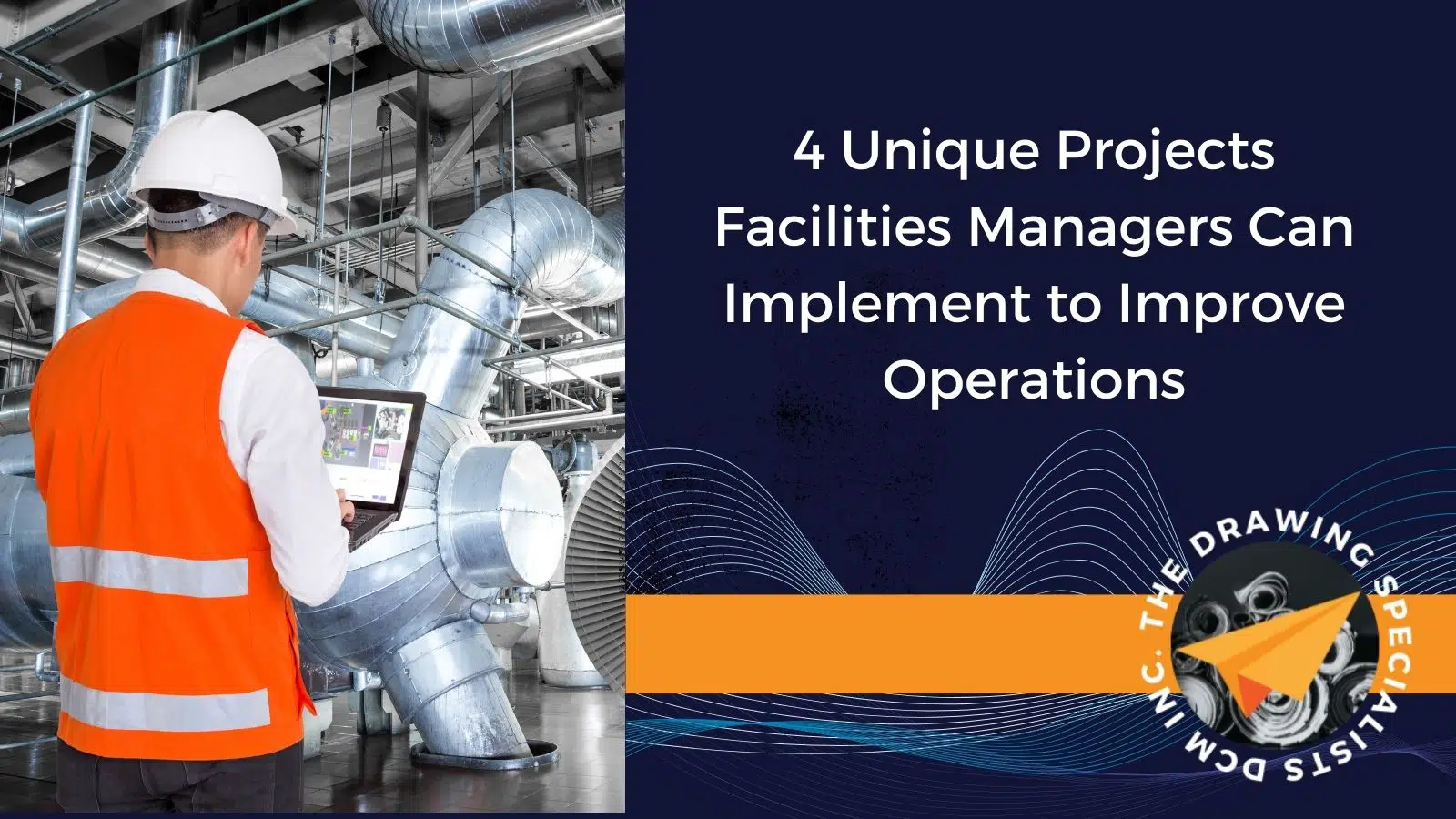Facilities managers (FMs) can make transformational changes to the long-term running of facilities, aiming to cut operational costs and improve service delivery. These are some areas where drastic or incremental changes can have far-reaching consequences:
4 Uniques Projects Facilities Managers Can Implement
1. Facilities Improvement
Optimizing space usage and minimizing energy wastage remains a critical part of the FM’s role. Here are some projects worth considering:
Space Redesign
Layout optimization is almost necessary post-COVID, as teleworking and hybrid working models force organizations to downsize office space. For the Facilities Managers, it could mean:
- Reorganizing floor plans and moving furniture
- Breaking walls in cramped-up spaces to ease movement
- Transforming office space into storage areas
Facilities managers facing increased product volumes at warehouses can increase the vertical storage space by installing racks and shelves. However, reimagining the space should not come at the expense of layout optimization. It wouldn’t be wise to spend half an hour fetching something that would have previously taken five minutes.
Improved Energy Use
Consider green retrofits for your properties to lower your energy consumption and boost business revenues. However, this can be a massive investment, and you’ll need financial support from the bank. Most would be willing to help if you can prove that it makes you money or saves what you’re currently spending.
Alternative funding sources could come from state or federal incentives. Here’s what you could do to cut energy costs:
- Replace older lights with energy-efficient LED
- Replace HVAC equipment with modern, energy-efficient models
- Improve the building’s insulation to lower heating and cooling expenses
2. Process Optimization
Facilities managers need to make the best use of resources assigned to them. Some targets where they could increase efficiency include:
Eliminating Workflow Bottlenecks
Think of a parking space allocation requiring five different approvals. Finance is one of the departments involved, but they’re already swamped with work, and approving parking space is the least of their priorities. Parking attendants don’t have much to do as they await authorization, while customers are agitated by the delays.
Workflow bottlenecks create unnecessary delays and may cause some employees to suffer burnout. Fortunately, it is possible to smooth out the process flow by cutting the number of sign-offs and redistributing unbalanced work schedules.
Supplier Sourcing
Finding good suppliers as well as aligning them to your organizational goals can be time-consuming and difficult. However, adopting strategic supplier sourcing decisions reinforces long-term stability, and your customers are assured of quality and reliability. It also helps you control operational costs thanks to well-negotiated long-term contracts.
Prequalifying suppliers will streamline the procurement process, ensuring that you have the best deal for your facility without compromising quality.
Preventive Maintenance
Always aim to go a notch higher on preventive maintenance. It takes a proactive facility manager to identify and prioritize maintenance needs. The goal is to create a long-term strategy for improving the service life of growing equipment inventory while minimizing breakdowns as well as user complaints.
Preventive maintenance is also easier with:
- An up-to-date asset inventory
- A suitable monitoring schedule with clear hierarchies or equipment priorities
- Reliable service technicians
- Reliable parts suppliers

3. Human Resource Design
Finding, developing, as well as keeping talent remains a challenge for many facilities managers. Here are some unique ideas on how to address those challenges:
Recruitment
With many organizations adopting a project-based approach, FMs need to find talent that can easily switch roles without losing sight of the organizational goals. The sheer variety of roles and responsibilities means that there is no one way to recruit a candidate. Every potential candidate is unique and often requires experienced screening to determine suitability, and here’s where specialist recruitment firms might need to step in.
Beyond job boards and recruitment firms, the FM also needs to design new strategies for attracting top talent, like redesigning job roles and rebranding job descriptions. They can build talented communities on social media and engage them by sharing exciting developments within the industry.
Retention
Winning the talent war during recruitment only guarantees short-term success in the job marketplace. Many managers rush heading into recruiting without fully considering the costs and challenges of retaining top talent. And things can be a little expensive on this end, with competitors offering higher-than-average pay packages to lure top talent.
The facility’s manager also needs to review their value offering to employees, hoping to fit as many personal aspirations as possible into the big picture. To succeed in the new realities, the FM might need to trigger a culture shift, even if it’s just for their department, and review their hiring attitude. They might also need to design new in-house training models and innovate winning career development goals.
Outsourcing
Facilities managers are changing their HR strategies by shifting some roles to contractors and subcontractors. Increased competition for top talent coupled with high labour costs makes it nearly impossible to keep some services in-house. Some tasks, after all, are only cyclic, and keeping permanent staff would only blow up your expenses.
Though it looks like HR’s forte, the FM’s responsibilities here would include:
- Identifying roles that would suit the outsourcing model
- Participating in contactor sourcing and evaluation
- Managing contractor groups on site
- Ensuring that contractor tasks remain within budget and scope

4. Technology Integrations
Technology integration simplifies the facility manager’s work by aggregating data collection, storage, as well as reporting. Working with the IT department, FMs should ensure that the following roles are covered by selected software:
Drawings Management
What would happen to your decades-old engineering drawings if an accidental fire broke out in the filing facility? You’d be better off storing copies of these precious documents digitally rather than crossing your fingers, hoping that the drawings are safe. A streamlined drawing management system uses architectural industry best practices to index, store, as well as manage access to scanned engineering drawings.
Automation makes it easier to pull out the floor plans when you need to investigate and solve the source of flooding in the basement.
Asset Tagging and Serialization
Asset tagging occupies a special place in facilities management because it helps manage valuable assets. Assigning unique labels to an asset has the following benefits:
- It makes it easy to trace asset movement and usage.
- It allows the FM to track asset maintenance histories.
- Likewise, it helps in physical verification during audits.
Movable assets can be tagged using RFID as well as GPS devices, and the internet can be used to track their locations. Barcode printers and scanners can also be used on low-value inventory.
Safeguard your drawings with a modern software solution designed with engineering and architectural specialists in mind, get in touch with DCM Inc. to discover how.
